Join Communities
 Enhance your Writing Skills |
 Become a Photographer |
 Handigifts |
 Learn about Jazz & More |
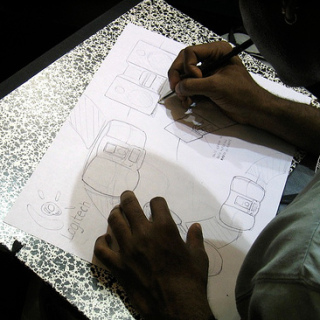 Love the Art |
Seven Wonders of the World:
Colosseum
The Colosseum, originally the
Flavian Amphitheatre, is an elliptical amphitheatre in the center
of the city of Rome, Italy, the largest ever built in the Roman
Empire. It is one of the greatest works of Roman architecture and
Roman engineering.
Occupying a site just east of the Roman Forum, its construction
started between 70 and 72 AD under the emperor Vespasian and was
completed in 80 AD under Titus, with further modifications being
made during Domitian's reign (81-96).The name "Amphitheatrum
Flavium" derives from both Vespasian's and Titus's family
name.
Originally capable of seating around 50,000 spectators, the
Colosseum was used for gladiatorial contests and public
spectacles. As well as the gladiatorial games, other
public spectacles were held there, such as mock sea battles,
animal hunts, executions, re-enactments of famous battles, and
dramas based on Classical mythology. The building ceased to be
used for entertainment in the early medieval era. It was later
reused for such purposes as housing, workshops, quarters for a
religious order, a fortress, a quarry, and a Christian
shrine.
Although in the 21st century it is in a ruined condition due to
damage caused by earthquakes and stone-robbers, the Colosseum is
now an iconic symbol of Imperial Rome. It is one
of Rome's most popular tourist attractions and still has close
connections with the Roman Catholic Church.
Physical Description - Interior Seating
History
The Colosseum could accommodate 87,000
people, although modern estimates put the figure at
around 50,000. They were seated in a tiered arrangement that
reflected the rigidly stratified nature of Roman society. Special
boxes were provided at the north and south ends respectively for
the Emperor and the Vestal Virgins, providing the best views of
the arena. Flanking them at the same level was a broad platform
or podium for the senatorial class, who were allowed to bring
their own chairs. The names of some 5th century senators can
still be seen carved into the stonework, presumably reserving
areas for their use.
Each tier was divided into sections by curved passages and low
walls, and were subdivided into cunei, or wedges, by the steps
and aisles from the vomitoria. Each row of seats was numbered,
permitting each individual seat to be exactly designated by its
gradus, cuneus, and number.
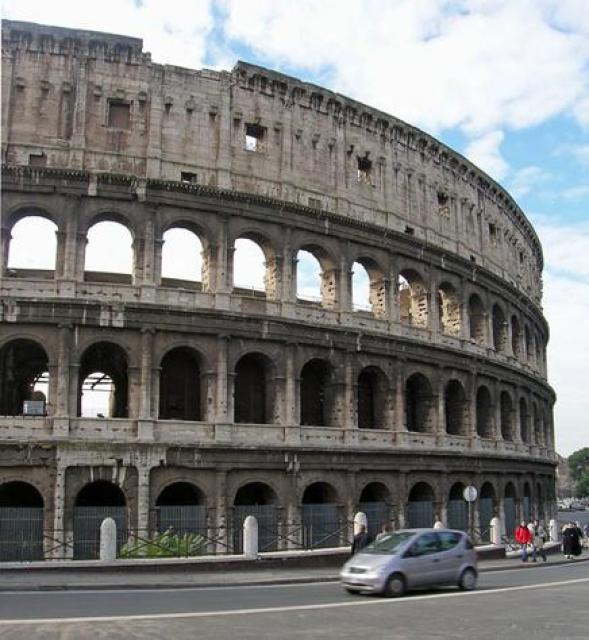
|
Tourism The Colosseum is today one of Rome's most popular tourist attractions, receiving millions of visitors annually. The effects of pollution and general deterioration over time prompted a major restoration programme carried out between 1993 and 2000, at a cost of 40 billion Italian lire ($19.3m / €20.6m at 2000 prices). In recent years it has become a symbol of the international campaign against capital punishment, which was abolished in Italy in 1948. Several anti-death penalty demonstrations took place in front of the Colosseum in 2000. Since that time, as a gesture against the death penalty, the local authorities of Rome change the color of the Colosseum's night time illumination from white to gold whenever a person condemned to the death penalty anywhere in the world gets their sentence commuted or is released,or if a jurisdiction abolishes the death penalty. Most recently, the Colosseum was illuminated in gold when capital punishment was abolished in the American state of New Jersey in December 2007. |
Due to the ruined state of the interior, it is
impractical to use the Colosseum to host large events; only a few
hundred spectators can be accommodated in temporary seating.
However, much larger concerts have been held just outside, using
the Colosseum as a backdrop. Performers who have played at the
Colosseum in recent years have included Ray Charles (May 2002),
Paul McCartney (May 2003),and Elton John (September 2005).
On July 7, 2007, the Colosseum was voted as one of New Open World
Corporation's New Seven Wonders of the
World.
Popular Culture
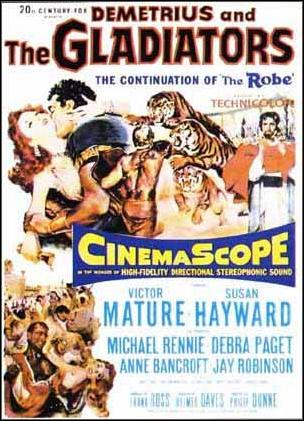
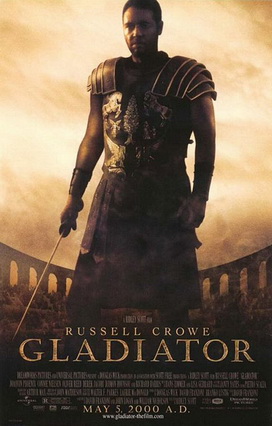
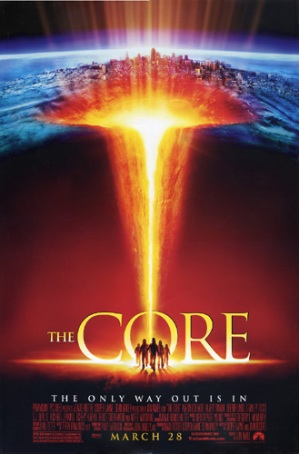
Demetrius and the Gladiators is
a 1954 sword and sandal drama film and a sequel to The Robe. It
was made by 20th Century Fox, directed by Delmer Daves and
produced by Frank Ross. The screenplay was by Philip Dunne based
on characters created by Lloyd C. Douglas in The Robe.
Gladiator is a 2000 epic film
directed by Ridley Scott and starring Russell Crowe, Joaquin
Phoenix, Connie Nielsen, Oliver Reed, Djimon Hounsou, Derek
Jacobi and Richard Harris. Crowe portrays General Maximus Decimus
Meridius, friend of Emperor Marcus Aurelius who is betrayed and
murdered by his ambitious son, Commodus (Phoenix). Captured and
enslaved along the outer fringes of the Roman empire, Maximus
rises through the ranks of the gladiatorial arena to avenge the
murder of his family and his Emperor.
The Core is a 2003 science
fiction disaster film loosely based on the novel Core by Paul
Preuss. It concerns a team that has to drill to the center of the
Earth and set off a series of nuclear explosions in order to
restart the rotation of Earth's core. The film was directed by
Jon Amiel, and starred Aaron Eckhart, Delroy Lindo, Tchéky Karyo,
Hilary Swank, DJ Qualls, Bruce Greenwood, and Stanley
Tucci.
Reference/Image Credits: Wikipedia, Go Porta, Igougo, Wikipedia, wiki/Image, Wikipedia, Wikipedia
Post Comments
hcraig said – Thu, 25 Jun 2009 15:00:04 -0000 ( Flag Edit Link )
I’ve heard, and wondered, the exact same thing!